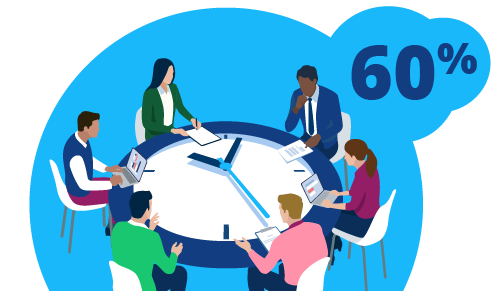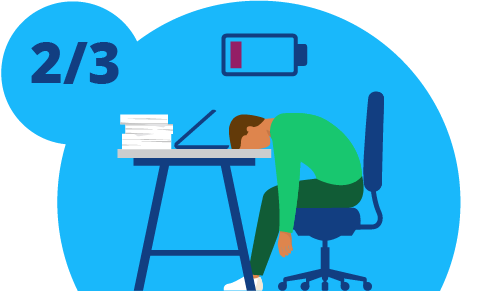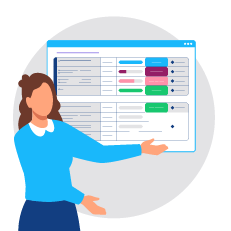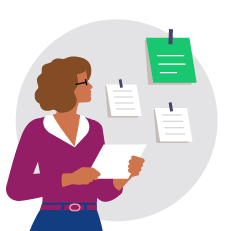Meeting Fatigue: When Meetings Miss the Mark, Stress Soars

Apr 28, 2025
“That could have been an email.” How often have you had that weary thought after leaving, yet another, meeting? As stress soars and workloads get more unruly, meetings are taking up increasingly precious time in our busy workdays.
As Wiley Workplace Intelligence continues our investigation into the rise of work-related stress, unnecessary or unfocused meetings have repeatedly come up as a source of some of this tension. Whether these meetings lack a clear purpose or agenda, or are simply too frequent, the time spent in a workday on video calls or in conference rooms is growing and putting a strain on employees at all levels.
We surveyed 1,500 individuals to understand more about the mounting impact of meeting fatigue in the context of stress at work and the results were not entirely surprising. Our research showed a direct correlation between the amount of time spent in meetings and the level of severe stress the person reported.
More Meetings, More Stress

60% spent more than 15 hours a week in meetings reported severe stress levels.
We’ve all had those days that are entirely devoted to meetings. When you finally close your computer, you may wonder “What did I actually do today?” When hours at a time are spent on calls, a normally productive workday can morph into a nebulous vortex, jumping from topic to topic, not having the satisfaction of actually finishing anything on your growing to-do list.
Our research showed that almost two-thirds of those surveyed who spent more than 15 hours a week in meetings reported severe stress levels. That could be for multiple reasons, ranging from simple attention-fatigue and burnout, to feeling a lack of control over their own schedule, or not having enough time to accomplish their work. Perhaps it’s counterintuitive as busyness is often seen as a sign of productivity, but the more meetings one has, the less productive they may feel, and that can take a toll on mental health as well.
It’s important to remember that meetings not only impact the time spent in the meeting itself. The time in between calls can feel nebulous, with not enough time to invest in focused work or catching up on tasks. Constant context switching between topics can be mentally exhausting and the pressure to stay engaged in back-to-back discussions can lead to burnout. Having multiple on-camera meetings per day can only exacerbate that burnout. Self-awareness is taken to a whole new level when you are forced to stare at your own reflection for hours at a time, leading to its own mental health impacts.
The Cost of Unproductive Meetings

2/3 experience fatigue due to unproductive meetings.
Meetings are obviously scheduled for a reason; people don’t typically choose to voluntarily waste their own time. However, two-thirds of our respondents reported meeting fatigue due to unproductive meetings. We’ve all been there, we get on the call and look around, waiting for someone to take the lead, to only be met with crickets as everyone struggles to remember why exactly we scheduled the meeting and who is in charge.
Unproductive meetings are a huge drain on time, energy, and resources. They reduce overall productivity and efficiency by pulling people away from more meaningful work, impacting morale. Over time, a pattern of too many unproductive meetings can lead to disengagement. This can have a significant impact on both employee wellbeing and the bottom line.
Despite 57% of people managers thinking most of their meetings are necessary, only 32% say the meetings they attend are effective. That statistic demonstrates an area of opportunity for organizations. When clear objectives, agendas, and desired outcomes are identified prior to the meeting, people can come prepared for a lively and productive discussion, leading to a more efficient use of time.
How to Maximize Meeting Effectiveness
Meetings, when leveraged effectively, are a necessary and valuable opportunity to gain alignment, increase connection (especially for hybrid teams), promote accountability, and provide time for collaboration.
Our respondents identified the top three things that would help improve the productivity of meetings and benefit both employees and the organization.
Top Ways to Maximize Meeting Time

Share a clear agenda

Identify important decisions

Clearly defined action items
The theme here is clarity. Taking time to think through the desired outcome before you click send on a meeting invite can be the difference between creating more fatigue and getting things done. Providing a structured agenda, planning frequent breaks, and shorter/fewer meetings also made the list of ways organizations can change their culture around meetings and maximize their value.
As technological innovation continues to progress, AI (artificial intelligence) provides an opportunity to streamline some meeting-related tasks to improve their effectiveness. Using generative AI like Copilot or ChatGPT to create an agenda or identify objectives is a great way to leverage technological advancement and free up time. Many collaboration tools like Microsoft Teams, Zoom, and the like have transcription and note-taking features that can help leaders identify takeaways, delegate responsibilities, and maximize the effectiveness of meetings without cutting into their bandwidth and adding cumbersome to-dos.
Reducing meeting fatigue is essential for maintaining employee wellbeing and maximizing productivity. When meetings are purposeful, focused, and limited to what's necessary, individuals have more time and mental energy to do meaningful work that is more gratifying. Streamlining meetings not only reduces stress and burnout but also boosts engagement, creativity, and overall organizational efficiency. In short: our research shows that fewer, better meetings lead to happier people and better results.
Wiley’s suite of professional solutions provides a structure and common language to help empower entire organizations with the skills needed to get to the next level. From building better teams with The Five Behaviors®, and improving understanding to create engaged, collaborative, and adaptive cultures with Everything DiSC® on Catalyst, helping you make confident hiring decisions with PXT Select®, or unlocking the power of leadership at every level with The Leadership Challenge®, Wiley has innovative solutions that help make the workplace a better place.
Wiley Workplace Intelligence conducts in-depth research on key workplace issues by gathering insights from individual contributors, managers, and leaders. Wiley Workplace Intelligence then analyzes these findings to provide actionable solutions that are shared in our blog.
